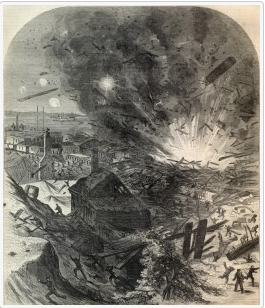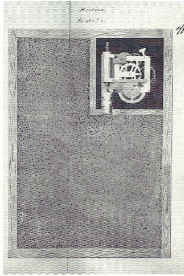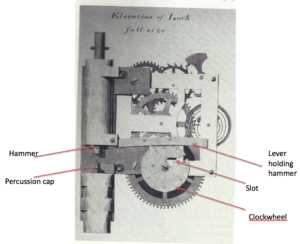Here’s a good report by an undercover Confederate operator, John Maxwell, in the American Civil War, describing an operation in August 1864 where he was able to deliver a “horological torpedo” (a timed IED in modern parlance) to a Union munitions barge named the “J E Kendrick” in City Point, Virginia.

The IED detonated and caused a large quantity of munitions aboard the barge, and neighboring ships and barges to explode, killing at least 43 people. The device had a clockwork timer and 12 pounds of explosive, but with the munitions also detonating it would have been several tons of explosive that went up. Some reports suggest that Maxwell himself designed and built the device. he watched the explosion from about 3/4 of a mile away.
Sir: I have the honor to report that in obedience to your order, and with the means and equipment furnished me by you, I left this city on the 26th of July last, for the line of the James River, to operate with the Horological Torpedo against the enemy’s vessels navigating that river. I had with me Mr. R. K. Dillard, who was well acquainted with the localities, and whose service I engaged for the expedition. On arriving in Isle of Wright County, on the 2nd of August, we learned of immense supplies of stores being landed at City Point, and for the purpose, by stratagem, of introducing our machine upon the vessels there discharging stores, started for that point. We reached there before daybreak on the 9th of August last, with a small amount of provisions, having traveled mostly by night and crawled upon our knees to pass the East picket line. Requesting my companion to remain behind about half a mile, I approached cautiously the wharf with my machine and powder covered by a small box. Finding the captain had come ashore from a barge then at the wharf, I seized the occasion to hurry forward with my box. Being halted by one of the wharf sentinels I succeeded in passing him by representing that captain had ordered me to convey the box on board. Hailing a man from the barge I put the machine in motion and gave it in his charge. He carried it aboard. The magazine contained about twelve pounds of powder. Rejoining my companion, we retired to a safe distance to witness the effect of our effort. In about an hour the explosion occurred. Its effect was communicated to another barge beyond the one operated upon and also to a large wharf building containing their stores (enemy’s), which was totally destroyed. The scene was terrific, and the effect deafened my companion to an extent from which he has not recovered. My own person was severely shocked, but I am thankful to Providence that we have both escaped without lasting injury. We obtained and refer you to the enclosed slips from the enemy’s newspapers, which afford their testimony of the terrible effects of this blow. The enemy estimates the loss of life at 58 killed and 126 wounded, but we have reason to believe it greatly exceeded that. The pecuniary damage we heard estimated at $4,000,000 but, of course, we can give you no account of the extent of it exactly.
There is an interesting description here of the effects of the explosion.
Initially the explosion was attributed to an accident, but Maxwell’s report came out some time later. I have also found a good diagram of the device, and in particular of the initiation system which I have annotated.

Timed IED containing 12 pounds of explosive in a box with a clockwork timing initiator

The timer works like this:
1. A piece of wire holds the the balance wheel of the clockwork mechanism. the wire protrudes from a hole in the wooden box. At the appropriate time the wire is withdrawn, feesing the clock and “arming” the device.
2. As the clock mechanism operates the clockwheel is rotated.
3. Eventually the lever, which has a stud protruding at its rear, falls into the slot.
4. The action of the lever falling into the slot releases hold of the hammer.
5. The hammer is forced by a spring to act against the percussion cap.
6. The percussion cap initiates the main charge.

Can anyone recommend a good history (or good historical sources) on timed explosives and their evolution into the nineteenth and twentieth century? Please email todd.kuchta@wmich.edu. Thanks.